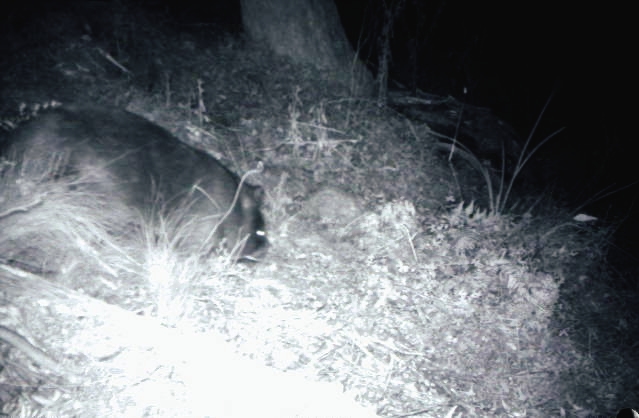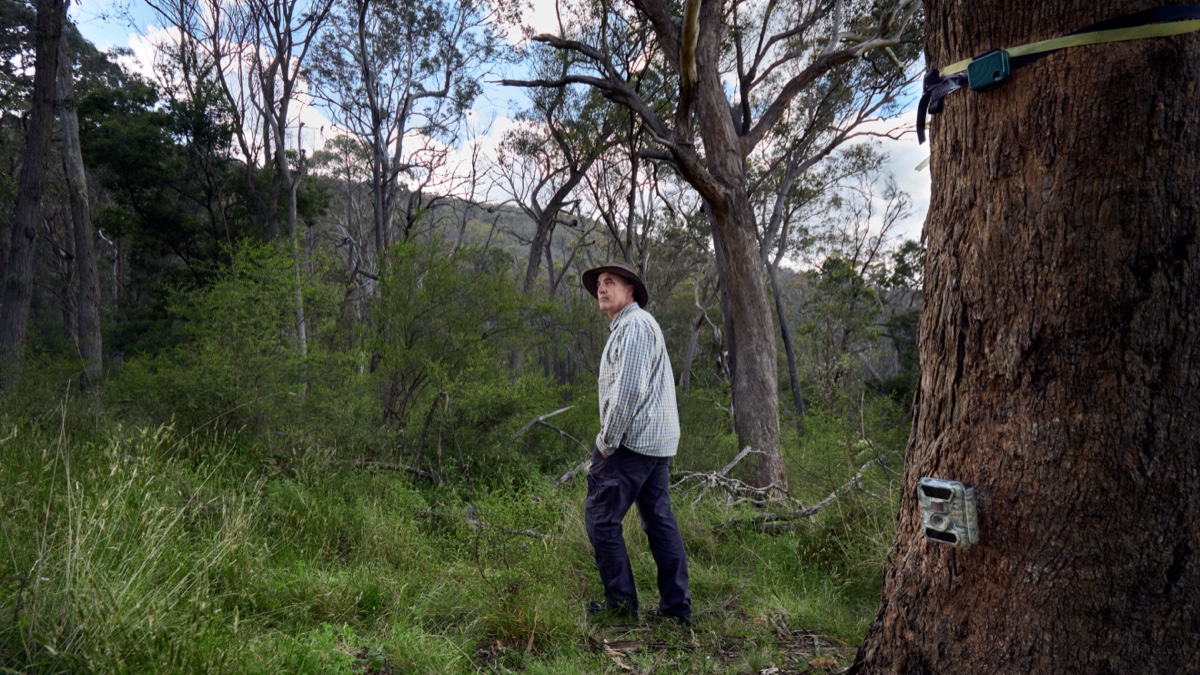Scrolling quickly through the images taken by a camera trap on Mt Duval, looming to the north of Armidale, UNE zoologist Dr Karl Vernes noted all the usual suspects: goats, kangaroos, wallabies, magpies, foxes, wombat … wombat?
The closest population of wombats that Dr Vernes knows of is in the Nowendoc valley, about 90 kilometres from Mt Duval as the crow flies. To the north, you have to go even further to find the sturdy marsupials.
The two successive images of a wombat — it was unquestionably a wombat — took Dr Vernes and some colleagues on a hunt for physical evidence. They scoured the area around the camera trap looking for burrows or a wombat's distinctively rhomboid scat: they found nothing. An array of 25 camera traps permanently set up on Mt Duval have not captured any more wombat snaps.
Dr Vernes is now going public with his search, not just for the Mt Duval wombat, but any wombats seen in the New England well outside their range.

Image: The wombat snapped by a motion-activated camera trap on Mt Duval.
"It may just be a vagrant animal that started wandering because of food scarcity in the drought, and is still wandering," said Dr Vernes, an Associate Professor who has researched mammal ecology on four continents.
"There's also a possibility that some well-meaning person picked up a young injured wombat, raised it, and found that wombats aren't so cute when they are adults. They could have let it go in the nearest patch of bushland."
Dr Vernes might have let the incident go as a freak sighting, except that when he asked the first farmer he subsequently met about wombat sightings, the farmer was positive that he'd seen one on the south side of Armidale. Someone else thought they'd seen wombat roadkill on the New England Highway between Armidale and Guyra.
Wombats once lived across parts of the tablelands where they are now absent. Dr Dan Lunney, a celebrated wildlife ecologist who Dr Vernes consulted after finding the camera trap images, uncovered oral histories of wombats living around Uralla and Armidale when he did a series of interviews in the districts for the Atlas of Living Australia.
Wombats are talented excavators, which has long made them unpopular with farmers.
Dr Vernes observed that NSW's first wildlife conservation act, introduced in the 1950s, left out protection for wombats on the urging of the farm lobby. Wombats became protected with new legislation introduced in the early 1970s, but by that time they had already disappeared from most of the New England.
Dr Vernes is intrigued at the possibility that wombats might be widening their range on the tablelands, although he acknowledges that it's unlikely.
"I would love to hear from anyone who has seen a wombat outside their usual range, to help us establish whether the Mt Duval wombat was a one-off vagrant or something larger is happening," Dr Vernes said.
"Many Australian native species are facing critical threats to their survival. It would be something to celebrate if wombats were flourishing in areas where they were once hunted — even for farmers, many of whom I know encourage native wildlife on their properties."
Wombat sightings can be reported to Dr Vernes on t. 02 6773 3255 (rings through to his mobile) or e. kvernes@une.edu.au


